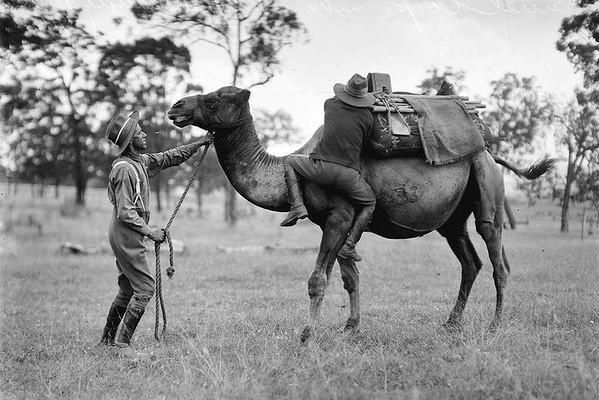Honoring World Camel Day: Discovering Camels’ Crucial Role in U.S. Military History at the Alamo
On World Camel Day, history buffs and families convened at the Alamo to uncover the intriguing and often forgotten narrative of camels within the U.S. Army. This special occasion illuminated the vital part these hardy creatures played in 19th-century military operations, offering fresh insights into a remarkable episode of American history. Through engaging exhibits and expert-led discussions, attendees deepened their understanding of camels’ resilience and their significant influence on the expansion of the American frontier.
Celebrating Camels’ Military Legacy on World Camel Day
During the World Camel Day festivities at the historic Alamo, visitors were introduced to a fascinating yet little-known facet of U.S. military heritage: the mid-1800s deployment of camels by the Army. Educational presentations and displays detailed how camels, primarily imported from Middle Eastern regions, were integrated into an experimental unit designed to navigate the challenging deserts of the American Southwest. Their superior endurance and capacity for carrying heavy loads made them invaluable compared to traditional pack animals like horses and mules.
Event highlights included:
- Authentic 1850s Camel Corps military equipment and memorabilia
- Live camel handling demonstrations illustrating training methods
- Interactive timelines chronicling the unit’s expeditions and obstacles
- Expert lectures on the corps’ impact and reasons behind its dissolution
| Year | Milestone | Historical Importance |
|---|---|---|
| 1855 | Camels introduced to U.S. Army | Tested for desert transport efficiency |
| 1861 | Camel Corps disbanded | Military focus shifted due to Civil War |
| 2024 | World Camel Day event at the Alamo | Honoring camels’ military heritage |
Unveiling the Camel Corps History at the Alamo
In the 1850s, the U.S. Army launched an innovative initiative by introducing camels to American deserts, forming the United States Camel Corps. This unique military experiment aimed to leverage camels’ natural ability to endure arid environments for transportation and supply missions across the Southwest. Recently, the Alamo hosted an immersive exhibit that allowed visitors to explore this captivating story, revealing how camels transformed military logistics and helped overcome the region’s formidable landscapes.
The exhibit featured rare artifacts and interactive elements that showcased the “ships of the desert” and their handlers’ experiences. Attendees discovered the challenges of integrating camels with traditional cavalry units and how this pioneering project influenced later military transport methods. Key takeaways included:
- 1856: Arrival of the first camels as part of the Camel Corps initiative.
- Adaptability: Camels’ exceptional performance in extreme desert climates.
- Disbandment: The corps’ dissolution following the Civil War and the subsequent fate of the camels.
| Year | Event | Outcome |
|---|---|---|
| 1856 | First camels arrive in Texas | Launch of Camel Corps experiment |
| 1861 | Start of Civil War | Project halted; equipment confiscated |
| 1866 | Camels sold or released | Official end of Camel Corps |
Interactive Exhibits Highlight Camels’ Role in Military Logistics
The Alamo’s special exhibit transported visitors back to a time when camels were a cornerstone of the U.S. Army’s logistical framework. Through hands-on displays and genuine artifacts, the story of the Camel Corps—a pioneering unit that revolutionized desert transport in the 19th century—came alive. Guests learned how these sturdy animals carried heavy loads, navigated treacherous terrain, and enhanced military mobility long before mechanized vehicles became standard.
The exhibit featured detailed infographics and an interactive zone where children and adults alike could engage with camel-related challenges. Highlights included:
- Historical gear: replicas of camel-specific saddles, water containers, and cargo crates.
- Route maps: showcasing the extensive paths camels helped secure across the Southwest.
- Animal care: insights into the veterinary practices soldiers used to maintain camel health in harsh conditions.
| Year | Camels in Service | Major Campaigns |
|---|---|---|
| 1855 | 70 | Southwestern Expeditions |
| 1857 | 80 | Military Supply Runs |
| 1860 | 65 | Desert Patrols |
This engaging experience not only honors camels’ lasting legacy in military history but also educates visitors on their indispensable role in overcoming environmental challenges. Through compelling storytelling and educational tools, the Alamo vividly brings this extraordinary chapter of U.S. Army history to life.
Engaging Activities Raise Awareness of Camels’ Military Contributions
Attendees at the Alamo’s World Camel Day event embarked on an interactive historical journey, discovering how camels shaped U.S. Army operations in the mid-19th century. The exhibits featured authentic artifacts and detailed stories that highlighted the Camel Corps’ groundbreaking missions across some of the most inhospitable terrains in America. Educational workshops offered insights into camels’ unique physiological traits and their critical roles in transportation and logistics during westward expansion.
Visitor engagement was further enriched through a variety of dynamic activities designed to connect people of all ages with the camels’ historical importance. These included:
- Live camel demonstrations showcasing their strength, stamina, and behavior.
- Guided storytelling sessions sharing firsthand accounts from soldiers who worked with camel caravans.
- Interactive quizzes testing knowledge on camel biology and military history.
| Activity | Description | Recommended Age |
|---|---|---|
| Camel Handler Demonstration | Close-up encounters with camels and lessons on handling techniques | All ages |
| Artifact Exploration | Examination of original Camel Corps equipment | Teens and adults |
| Interactive Historical Timeline | Tracing camels’ journey and military contributions | All ages |
Conclusion
As World Camel Day concluded, visitors at the Alamo were reminded of the extraordinary and often overlooked role camels played in the history of the U.S. Army. The event provided a rare window into this captivating chapter, celebrating the enduring legacy of these resilient animals and their handlers. Through immersive exhibits and live demonstrations, attendees gained a renewed appreciation for camels’ contributions to military success in the American Southwest. This celebration highlights the importance of preserving this unique aspect of both military and cultural heritage for generations to come.




